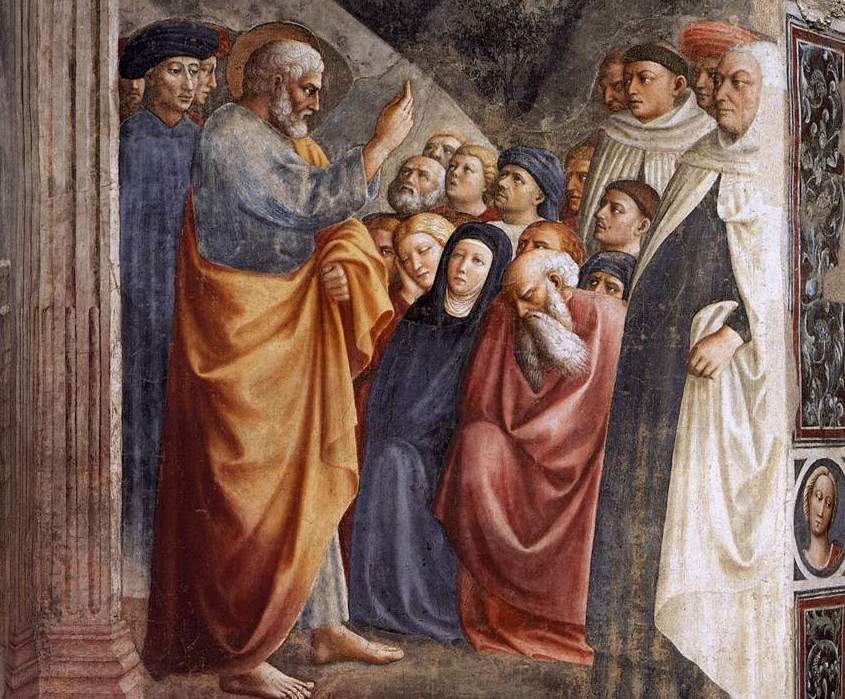The restoration of the Brancacci Chapel, which is part of the Florentine Civic Museums, will start soon, but it will not close, and the public will have an extraordinary opportunity to admire Masaccio and Masolino ’s masterpieces up close by climbing the scaffolding. The restoration is part of a comprehensive research and enhancement program promoted by the City, Soprintendenza, CNR-Ispc of Florence, Opificio delle Pietre Dure and the U.S. Friends of Florence Foundation, in co-partnership with the Jay Pritzker Foundation. On Monday, Nov. 29, the Brancacci Chapel will close to the public for scaffolding installation, and the work will last one year. Already starting in January, visitors will be able to return to see this little Florentine jewel in a close dialogue with the works: the scaffolding will be positioned so that it can be climbed, and a special elevator is also planned to provide access for people with disabilities.
“We could not close the Brancacci Chapel for so long,” comments Mayor and Councilor for Culture Dario Nardella, “especially after the prolonged lockdown period for our museums due to Covid. Thanks to this solution, it will be possible to continue to visit it and enjoy the extraordinary paintings in a completely unprecedented and unrepeatable way.”
In November 2020, the Brancacci Chapel underwent an initial monitoring to assess its state of health: some phenomena of deterioration of the pictorial cycle emerged, which need to be stabilized through a restoration intervention for which a protocol of understanding was signed between the City, the Superintendence and the Opificio delle Pietre Dure. The last restoration dates back to the 1980s. The three-year protocol includes analysis and monitoring interventions by the Soprintendenza, with the involvement of the CNR, and subsequent restoration by the Opificio delle Pietre Dure under the supervision of a scientific committee and thanks to a technical group. The Friends of Florence Foundation has announced its intent to co-participate, along with the Jay Pritzker Foundation, in financing and carrying out the analysis and monitoring work and has also expressed interest in financing the restoration.
The Chapel is located inside the Church of Santa Maria del Carmine. It was built by the Brancacci family in the late 14th century; the rich merchant Felice Brancacci is credited with commissioning in 1423 the frescoes with the stories of St. Peter. Masolino and Masaccio worked on it together, but due to the departure of the former to Hungary and the latter to Rome, the frescoes remained unfinished in 1427. Following the exile of Brancacci (1436), who had fallen into disgrace for his anti-Medicean sympathies, the friars of the convent had the portraits of all the people connected with his family erased, and in 1460 they named the chapel after the Madonna del Popolo, inserting the venerated 13th-century panel. Only in the years 1481-1483 did Filippino Lippi carry out the restoration and completion of the missing scenes. Having escaped the fire that devastated the interior of the church in 1771, the chapel was purchased in 1780 by the Riccardi, who renovated the altar and floor. The frescoes, neglected throughout the nineteenth century, were subjected to dusting in 1904; restoration work carried out in the 1980s made it possible to recover the precious decorated surfaces.
Image: Masolino, Preaching to the Crowds
 |
| Florence, scaffolding at Brancacci Chapel to admire frescoes up close for the first time |
Warning: the translation into English of the original Italian article was created using automatic tools. We undertake to review all articles, but we do not guarantee the total absence of inaccuracies in the translation due to the program. You can find the original by clicking on the ITA button. If you find any mistake,please contact us.